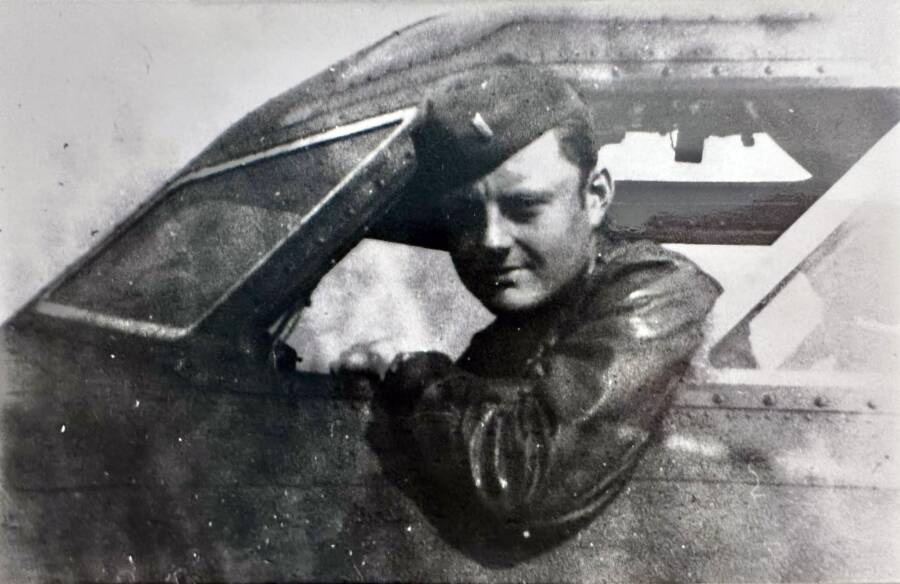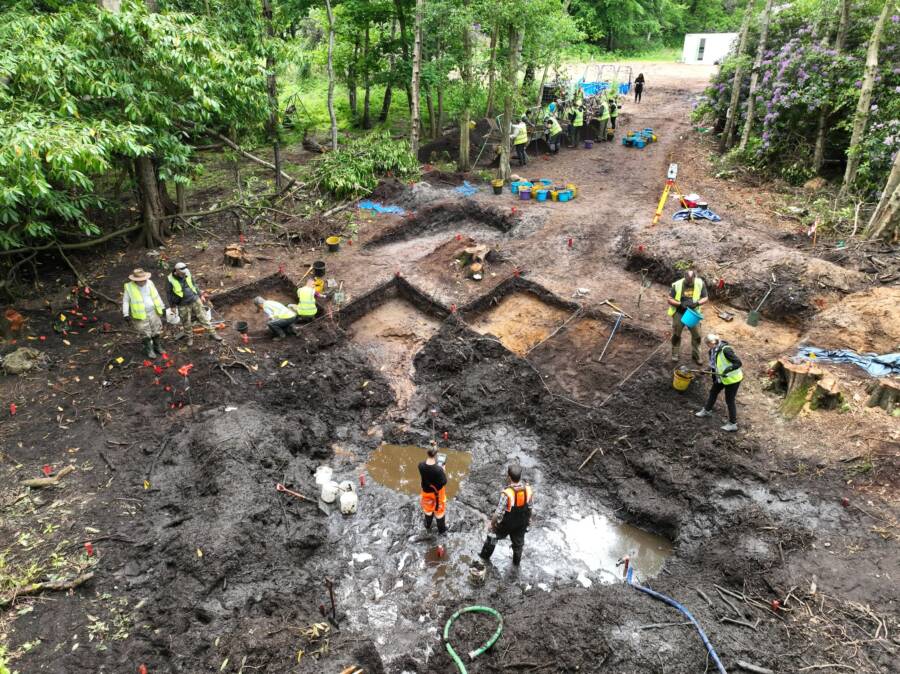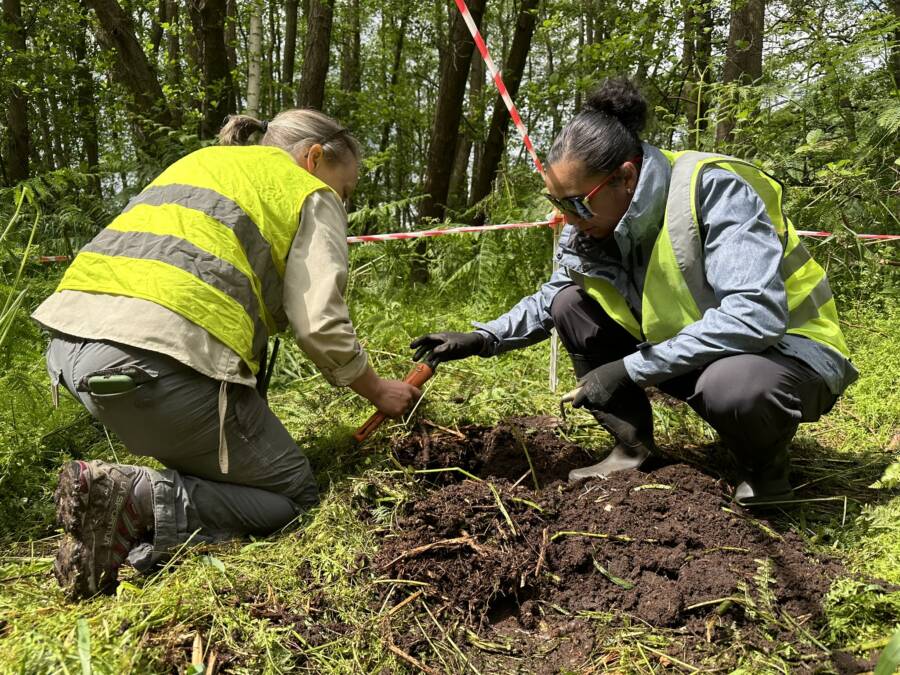Lieutenant John Fisher was just 21 years old when his plane crashed near Suffolk, England, during a top-secret mission in August 1944.

Cotswold ArchaeologyJohn Fisher was on a mission to target Nazi rocket sites when his plane stalled shortly after takeoff.
For 80 years, a field in Suffolk, England, has hidden the remnants of a wartime tragedy. In August 1944, a B-17 “Flying Fortress” bomber went down after suffering a mechanical failure, taking the life of 21-year-old Lieutenant John Fisher Jr. Now, archaeologists have found remnants of his lost plane.
Sweeping the field with metal detectors, English and American airmen stationed in the country discovered a number of tiny objects embedded in the field that came from Fisher’s plane. Though nearly a century has passed since Fisher went down with the aircraft, their mission embraces the military philosophy of “no man left behind.”
Searching For Parts Of John Fisher’s Plane

Cotswold ArchaeologyThe search for remnants of John Fisher’s plane has been painstaking but has produced some exciting results.
Cotswold Archaeology, in partnership with the Defense POW/MIA Accounting Agency, has been scouring England for lost pilots like John Fisher in recent months. Their search for Fisher has focused on a field along the eastern coast of England, in Suffolk, where his plane went down on Aug. 4, 1944.
According to CBS News, the search has been fruitful so far.
A team of archaeologists, volunteers, veterans, active-duty U.S. servicemen, and people working with Operation Nightingale (a military initiative which aims to use archaeology to recover lost service personnel) have swept the area with metal detectors and looked painstakingly through the muddy soil for pieces of Fisher’s plane. They’ve found a number of tiny objects that were embedded in the ground when he crashed.
The 3,000 fragments recovered so far include shattered glass from an oxygen bottle, part of a propeller, pieces of the fuselage and engine, fabric from a parachute, a rusted horseshoe that may have been on the plane for luck, and a General Motors Corporation nameplate.

Cotswold ArchaeologyThe team has found more than 3,000 fragments of the plane so far.
If potential human remains are found, they will be flown to a Defense Department lab in Hawaii, according to CBS News, where they will be tested. If they are confirmed to be human and a DNA match can be determined, a military funeral will be arranged.
This could provide closure to any of Fisher’s relatives who are still living, since his body was never recovered after his plane crashed in 1944.
How John Fisher’s Plane Went Down In 1944
As Cotswold Archaeology wrote on Facebook, John Fisher Jr. was an American B-17 bomber pilot during World War II. Though just 21, he was an experienced pilot and a participant in a “top secret” and dangerous mission called Operation Aphrodite. It sought to target German rocket sites and submarine pens by using the aging planes as bombs.
“These ‘Aphrodite babies’ were stripped back, filled with highly-explosive Torpex, and flown toward their targets by just a pilot and co-pilot,” Cotswold Archaeology explained on Facebook. “Once on course, the crew planned to bail out, leaving a ‘mother’ plane to remotely guide the drone to its target.”
But just minutes into Fisher’s mission, things went terribly wrong.

Cotswold ArchaeologyJohn Fisher was an experienced pilot, but his plane malfunctioned during Operation Aphrodite in 1944.
“On this mission, a malfunction caused [Fisher’s] plane to pitch, dive, and then stall,” Cotswold Archaeology wrote. “With little time, he pushed his co-pilot from the plane to safety, ultimately sacrificing himself.”
Thus, Fisher was lost before the mission had even began. But he was not forgotten. The parts of his plane recovered in Suffolk are stark reminders of his sacrifice. And, hopefully, they can provide closure to his loved ones.
After reading about how archaeologists have recovered parts of John Fisher’s lost World War II plane, look through these stunning colorized photos of World War II. Or, discover the stories of some of the fearless resistance fighters who took on the Nazis during the conflict.





